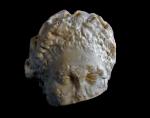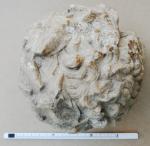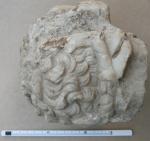
Description
- 422
- Head of Faun, reworked as a (?) counterweight
- 1st-2nd c.? AD
- White marble, fine-grained.
- Ht. max. ca 15.5 cm. Depth at break, 12 cm. Face, l. current ca 7.1 cm, l. nose ca 4 cm; w.ca. 9 cm at the cheekbones.
- "As statuary: sheared diagonally across neck and head, from the nape of the neck obliquely upwards to the bottom of the nose. Two very large regular cuts, of wedge-shaped section, shape it into a spherical secondary object. The break line runs diagonally down across the face from just below the top of the left cheekbone, just below the missing nose, down through the middle of the right cheek. The nose is broken away below the bridge; the end of the hole of the drilled left nostril is visible. A large flake is lost from the left cheekbone, below the lower left eyelid to the break; the left eyebrow is partially chipped off. Edges of vine leaves are chipped above. Superficial scratches, scars on the face; one fresh break off the bottom of a vine leaf. Worn surfaces, with a yellow-grey patina on all exposed marble, preserve much of their original smoothing.rn As secondary object: cutting channels intact, additional secondary breakage to original carving possible. Some very slight traces of mortar adhere, indicating a tertiary context in building rubble.
- "The youthful head of a faun, approximately one-3rd life-size, preserves the short hair-cap and the upper half of the face with a portion of the lower right cheek, and much of a vine leaf crown. After breakage or dismemberment two enormous cuts were made at the back of the skull, tapering inwards (trapezoidal in section). Their faces and bottom were carefully worked flat with a picking tool; the left channel shows some rasp marks within. rn In good-quality marble, the head is very finely executed with a marked brow ridge, small eyes thickly lidded set close together, and a long oval face. Visible are traces of sideburns. The eyelids are modeled with delicacy, tightly banding the small, almond-shaped, undrilled eyes; brows were left smooth, without carved texture. Careful finish extends to modeling the separate muscles on each side of the nape. A flat corona of delicate short curls, delicately incised and faceted, rises around the forehead; those at the crown twist up vigorously. The richly plastic vine-crown, with leaves veined in low relief, is tied at the back by knotted stems and cords in a Hercules-knot.
- The vine crown identifies the youthful head as a young satyr, a faun, for a statue or herm. The strong nasolabial depression at right that suggests that the lost mouth smiled. Like other Roman depictions of satyrs, the style blends Praxitelean, Lysippan and other 4th-c. BC traits. The fine execution and un-drilled eyes, in conjunction with very sparing use of the drill, suggest the early 2nd c. AD, the villa’s first phase. It is possible that this is an even older piece, whether from an earlier phase of the villa (1st c. BC-AD) or bought as a collector’s piece.nSecondary use: this head was reworked for a utilitarian purpose after it broke across horizontally. The cuttings into the break faces created channels for something like a thick cord to secure the head firmly to an apparatus. Because the channel faces are not scarred, organic strapping rather than metal is more likely. It is possible that it served as a counterweight, though it is not easy to imagine for what. Late antique and early medieval counterweights for oil or wine presses were usually made from architectural spolia and were far heavier. Another possibility is the counterweight of a church door or, given its findspot in the cloister, a door in the monastery,n
- Agora spolia weights, one given mortise channels and of those one with a squared bottom, suggestive for our head's cuttings, see Forbes and Foxhall, 1978, 37-47 and fig. 10-11.












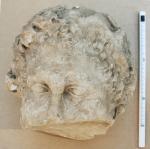
![Download [view]](/villamagna/ark//skins/villamagna/images/results/download_sml.png)


